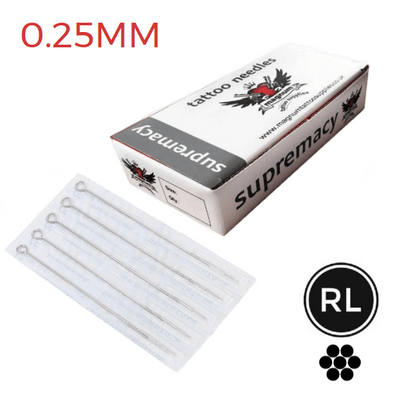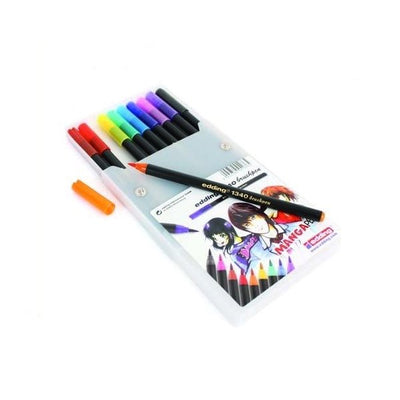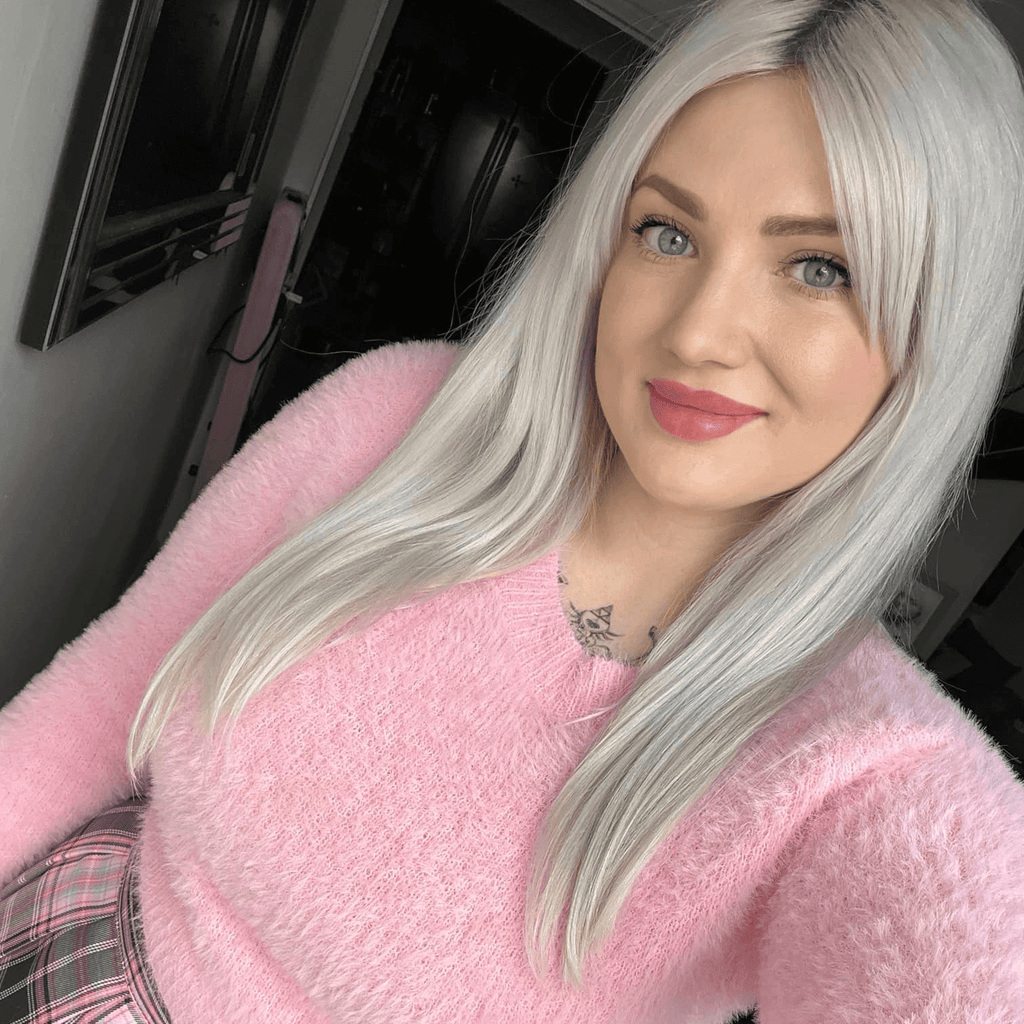Abstract tattoos have surged in popularity as a vibrant and expressive form of body art, pushing the boundaries of traditional tattoo design. These tattoos stand out for their ability to convey emotions and ideas through shapes, colours, and forms without necessarily representing something immediately recognisable.
So, let’s explore their appeal, design considerations, and the unique ways they interact with the body’s contours.
History of abstract tattoo

The history of abstract tattoos is closely tied to the development of abstract art, which started in the early 20th century. Artists like Wassily Kandinsky and Piet Mondrian broke away from traditional forms, focusing on emotions and ideas through shapes and colours rather than realistic images. This artistic movement eventually influenced tattooing, particularly from the late 20th century onwards, as tattoos became recognised as a legitimate art form.
Abstract tattoos gained popularity as artists began experimenting with techniques that mimicked traditional painting methods, like brush strokes and splatters, applied directly onto the skin. Modern tattoo artists have continued to innovate, pushing the boundaries of how abstract art can be expressed through tattoos.
These tattoos often serve as personal expressions of the wearer’s thoughts or life experiences, using abstract designs instead of direct imagery. This reflects a broader acceptance and appreciation of diverse forms of expression in today’s culture.
What are abstract tattoos and their meanings?
Abstract tattoos are designs that don’t necessarily depict specific objects or scenes from the real world but instead use shapes, lines, colours, and forms in a non-representational way. These tattoos can be deeply personal and symbolic, often representing emotions, thoughts, or aspects of one’s personality that are difficult to express in traditional images.
The meanings of abstract tattoos are usually unique to the individual, as they can be customised to convey a particular sentiment or concept that holds significance to the wearer. Such tattoos are often appreciated for their artistic beauty and the creative freedom they allow, both for the tattoo artist and the person receiving them.
How do you design an abstract tattoo?

1. Understand the client’s vision
Begin by consulting with your client. This discussion should cover the basic ideas of what they want and any deeper meanings or emotions they hope to capture in the tattoo. Ask about preferred colours, shapes, and any symbols that are significant to them. The more you understand their vision and reasons, the better you can create a design that resonates with them.
2. Gather inspirational materials
Inspiration can come from anywhere—nature, artwork, architecture, or even emotions. Collect materials such as photographs, paintings, and sketches that align with the client’s vision. Look for textures and forms in everyday life that could translate well into abstract art. This phase is about expanding your visual library to fuel your creativity.
3. Sketch preliminary designs
Start with loose sketches, experimenting with different forms and compositions. Abstract tattoos thrive on fluidity and innovation, so allow your creativity to lead the way. Use the sketches to explore how different elements interact, such as the contrast between sharp and soft lines, the flow of the design on the body, and the integration of symbolic elements.
4. Refine your concept
Once you have a variety of sketches, refine them into a more coherent design. This may involve enhancing certain features, simplifying overly complex parts, or adjusting the scale and orientation to better suit the intended body part. Feedback from your client is crucial to ensure the design aligns with their expectations.
5. Consider the colour palette
Ink colour can deeply affect the mood and impact of an abstract tattoo. Decide whether the tattoo will be in black and grey or include colours. If using colour, consider colour theory basics to select hues that complement each other and enhance the desired emotional effect.
6. Digitalise the design
Use graphic design software to finalise your sketches into a polished design. This step allows you to tweak minor details, adjust symmetry, and experiment with different colour schemes easily. Digitalisation also helps in creating stencils that will guide you during the tattooing process.
7. Prepare for the tattoo session
Before inking, ensure that your design and equipment are ready. Prepare the stencil, sterilise your tools like needles and tattoo machine, and set up your workstation. Remember, the application of the tattoo is as crucial as the design phase, especially for abstract tattoos where precision in execution can define the nuances of the design.
8. Ink with confidence
As you begin tattooing, maintain a steady hand and focus on the precision of your lines and shading. Abstract tattoos often involve complex blends and subtle gradients, so attention to detail is key. Keep open communication with your client to ensure comfort and satisfaction throughout the session.
9. Post-tattoo care and feedback
After the tattoo is completed, provide your client with detailed tattoo care instructions to ensure proper healing. Also, gather feedback about their experience and the outcome of the tattoo. This will help you refine your skills and approach for future projects.
Tips for doing a perfect abstract tattoo

- Incorporate fluid lines and shapes: Use fluid, sweeping lines and irregular shapes to create movement and add a dynamic feel to the tattoo.
- Blend colours thoughtfully: Select a colour palette that conveys the desired mood. Blend colours seamlessly to create gradients or sharp contrasts where needed.
- Texture and depth: Experiment with different needle configurations to create texture. Use shading strategies to add dimension and depth.
- Negative space usage: Effectively utilise negative space to form part of the design, giving the tattoo a balanced and interesting look.
- Asymmetry: Employ asymmetrical designs to enhance the abstract nature of the tattoo, making it unique and eye-catching.
- Layering elements: Overlay multiple elements or images so that they interact interestingly but maintain an abstract form.
Why do people get abstract tattoos?
People get abstract tattoos for a variety of reasons, often as unique as the designs themselves:
- Personal expression: Abstract tattoos provide a way for individuals to express complex emotions, thoughts, or aspects of their personality that can’t easily be conveyed through traditional imagery.
- Aesthetic appeal: Many choose abstract tattoos purely for their artistic beauty. The use of bold colours, fluid lines, and unique forms can make these tattoos striking and visually appealing.
- Symbolism: Abstract designs can carry deep personal or symbolic meanings without being overt. They can represent abstract concepts like freedom, chaos, or harmony.
- Creativity: Abstract tattoos allow both the artist and the wearer to explore creativity. They are less bound by the traditional rules of tattoo design, offering more freedom in terms of interpretation and style.
- Uniqueness: Abstract tattoos are highly unique because they are not confined to a specific recognisable form. This uniqueness ensures that the tattoo is one-of-a-kind and reflects the individual’s distinctiveness.
- Storytelling: Some people use abstract tattoos to tell a story in a non-linear, non-traditional way, allowing observers to interpret the narrative based on their perspectives.
- Emotional release or healing: For some, abstract tattoos are part of a healing process, helping them to encapsulate complex emotions related to personal traumas or life-changing experiences.
- Versatility: Abstract tattoos can easily be integrated with other tattoo styles or existing tattoos, making them versatile choices for expanding body art over time.
- Trend influence: Pop culture and fashion trends also influence the decision to get abstract tattoos, as they can be seen as modern, stylish, and progressive.
- Philosophical or spiritual significance: Some abstract tattoos might represent philosophical ideas or spiritual beliefs, embodying them in forms that are open to interpretation.
Popular abstract tattoo ideas:
Abstract nature
This style uses fluid, organic shapes and lines to represent elements of nature in a non-literal way. It could include swirling patterns that evoke the movement of water, wind, or the organic growth patterns of plants.
Abstract arts
Inspired by abstract expressionist painters, these tattoos often utilise bold splashes of colour, irregular shapes, and dramatic strokes. They can be a homage to famous abstract artists or an original composition that conveys personal emotions or thoughts.
Abstract geometry
Featuring geometric shapes like circles, triangles, and squares, these tattoos are arranged in ways that defy traditional symmetry or order. They often incorporate elements of sacred geometry, which can imbue them with spiritual or philosophical significance.
Minimalist abstract
These tattoos use simple lines and minimalistic designs to convey meaning or aesthetic beauty. They are often composed of a few elegant lines that create a subtle yet impactful design, perfect for those who appreciate understated art.
Abstract heart tattoo design
Transforming the classic heart shape into a more artistic and symbolic tattoo, this design might use fragmented or distorted lines to form a heart, symbolising complex emotions like love, heartbreak, or healing.
Final thoughts
Abstract tattoos offer a unique and deeply personal way to adorn one’s body with art that resonates on an emotional level. They break away from traditional forms, offering a canvas of creativity that is both personal and expressive. For those looking to make a statement that is both visually stunning and rich in meaning, abstract tattoos are a compelling choice.



























































 Studio supplies
Studio supplies












 Power & batteries
Power & batteries








 Aftercare
Aftercare





















 Apprentice
Apprentice


 Piercing & jewellery
Piercing & jewellery







 PMU supplies
PMU supplies




 New arrivals
New arrivals
 Gift vouchers
Gift vouchers
 Shop all
Shop all















































